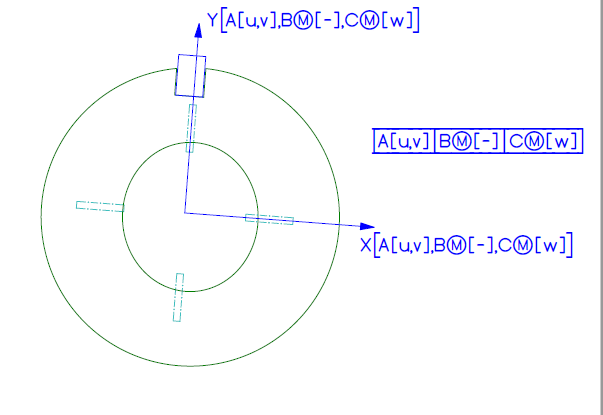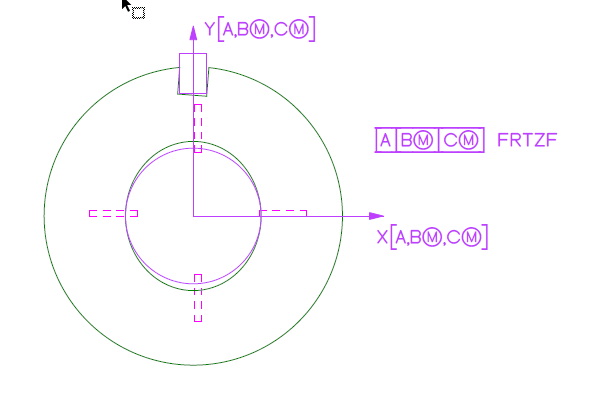Hi All,
This is getting interesting ;^).
Dave, it sounds like your instincts are mostly correct on this. It would make sense to use the same DRF for both segments. But pmarc is correct that A|B|C and A|C would not result in the same DRF (relationship between the actual part and the coordinate system and tolerance zones).
I would say that the main root cause of the widespread difficulties with FRTZF's is in Y14.5's description of how the datum features work. in 7.5.1 (b) (2) it states the following:
"If datums are specified in a lower segment, they govern the rotation of the FRTZF relative to the datums and within the boundaries established and governed by the PLTZF."
There are (at least) two ways that this statement can be interpreted:
1) The datum features referenced in the lower segment govern rotation of the FRTZF because they only control rotational degrees of freedom. So the lower segment is essentially similar to a customized DRF.
2) The datum features govern rotation of the lower segment govern rotation of the FRTZF because the FRTZF is allowed to translate relative to the DRF. So the lower segment is essentially similar to an orientation tolerance.
From what I have seen, interpretation 1) is by far the most common (I have talked to many people about this, including Y14.5 members). However, when I follow the consequences of each interpretation, I find that interpretation 2) is far superior. The set of things that needs to be true makes very good sense - it just works. It properly explains difficult composite FRF examples such as Figure 7-42 (and why the B reference is necessary). Interpretation 1) is reasonably workable for simple examples involving orthogonal planar datum features, but leads to untenable consequences in other cases.
So where does that leave us with Figure 7-42? I would say that none of the customized DRF's properly capture the effect of the lower segment, because they can't. It's just not the same thing. The datum features in the lower segment constrain DOF's in exactly the same way as they do in the upper segment, and result in the same DRF. The upper segment controls location because the PLTZF does not translate relative to the DRF. The lower segment doesn't control location, because the FRTZF translates relative to the DRF. Figure 7-42 (a) shows this quite clearly.
Evan Janeshewski
Axymetrix Quality Engineering Inc.



